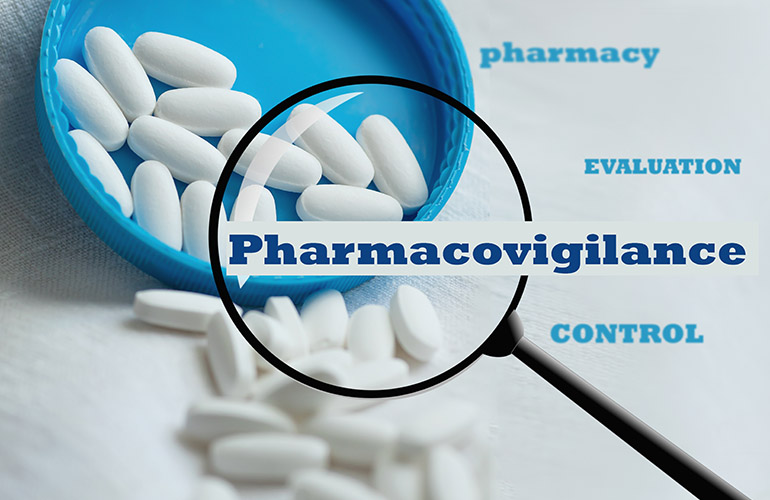1. Complexity of Biopharmaceutical Products:
- Biological Variability: Biopharmaceuticals, derived from living organisms, exhibit greater variability compared to small-molecule drugs, complicating safety assessments.
- Manufacturing Changes: Minor changes in manufacturing processes can impact the safety and efficacy of biopharmaceuticals, requiring robust monitoring.
2. Immunogenicity:
- Immune Responses: Biopharmaceuticals can induce immune responses, including the production of anti-drug antibodies, which can affect drug efficacy and safety.
- Detection and Management: Identifying and managing immunogenicity-related adverse events pose significant challenges.
3. Complex Adverse Event Profiles:
- Multifaceted Adverse Events: Biopharmaceuticals often have complex adverse event profiles, including delayed or chronic effects, making detection and assessment challenging.
- Rare and Long-Term Effects: Detecting rare and long-term adverse events requires extensive post-marketing surveillance.
4. Regulatory and Compliance Issues:
- Diverse Regulations: Different countries have varying pharmacovigilance regulations, making global compliance challenging for biopharmaceutical companies.
- Stringent Requirements: Regulatory bodies impose stringent reporting requirements and expect comprehensive safety data, adding to the workload.
5. Data Management:
- Data Volume and Quality: The sheer volume of safety data from various sources (clinical trials, real-world evidence, spontaneous reports) needs effective management and quality control.
- Integration of Data Sources: Integrating data from different sources and formats for comprehensive safety assessments is complex.
6. Technological and Analytical Challenges:
- Advanced Analytics: Utilizing advanced analytical methods, such as machine learning and AI, to detect and predict adverse events requires specialized expertise and technology.
- Signal Detection: Identifying true safety signals from large datasets while minimizing false positives is challenging.
Best Practices in Pharmacovigilance for Biopharmaceuticals
1. Robust Risk Management Plans:
- Comprehensive Planning: Develop detailed risk management plans (RMPs) that outline potential risks, monitoring strategies, and mitigation measures.
- Proactive Measures: Implement proactive risk minimization strategies, such as patient education and healthcare provider training.
2. Advanced Immunogenicity Assessment:
- Early Detection: Utilize advanced methods to detect and characterize immunogenicity early in the drug development process.
- Ongoing Monitoring: Continuously monitor for immunogenicity throughout the product lifecycle and adapt risk management strategies accordingly.
3. Enhanced Data Collection and Integration:
- Real-World Evidence: Leverage real-world evidence from electronic health records, patient registries, and other sources to complement clinical trial data.
- Harmonized Databases: Develop harmonized databases and data standards to facilitate integration and analysis of safety data.
4. Utilization of Advanced Analytics:
- Machine Learning and AI: Apply machine learning and AI techniques to enhance signal detection, data mining, and predictive modeling.
- Data Visualization: Use advanced data visualization tools to identify trends and patterns in safety data.
5. Global Regulatory Compliance:
- Harmonized Approach: Adopt a harmonized approach to meet diverse regulatory requirements across different regions.
- Regular Updates: Stay updated with evolving regulatory guidelines and ensure timely compliance.
6. Effective Communication and Training:
- Stakeholder Communication: Maintain clear and transparent communication with all stakeholders, including regulatory bodies, healthcare providers, and patients.
- Ongoing Training: Provide ongoing training to pharmacovigilance teams on the latest best practices, regulatory requirements, and technological advancements.
7. Collaborative Efforts:
- Industry Collaboration: Collaborate with other biopharmaceutical companies, regulatory agencies, and academic institutions to share data and best practices.
- Public-Private Partnerships: Engage in public-private partnerships to enhance pharmacovigilance capabilities and infrastructure.
8. Patient-Centric Approach:
- Patient Involvement: Involve patients in pharmacovigilance activities, such as reporting adverse events and providing feedback on risk management measures.
- Patient Safety: Prioritize patient safety by ensuring timely identification, assessment, and communication of risks.
By addressing these challenges and implementing best practices, biopharmaceutical companies can enhance the safety monitoring and management of their products, ensuring better patient outcomes and regulatory compliance.


No Comments